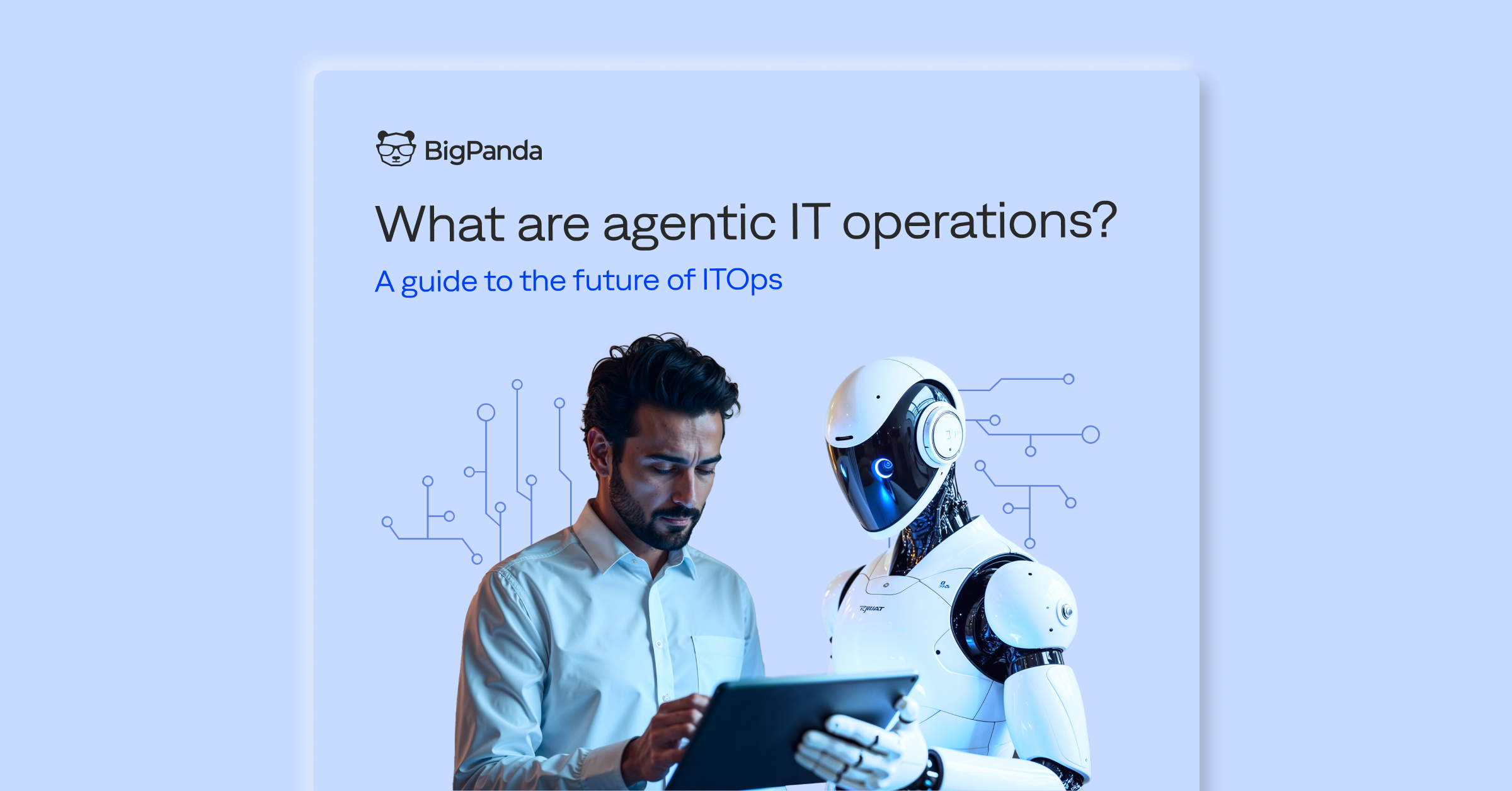How ITOps is evolving to support brick-and-mortar retail

To hear Ehab Tarabay explain it, the need for retailers to continue evolving their digital operations is an age-old problem.
As an avid IT specialist with a track record of more than 20 years in the technology field, Tarabay — head of workplace IT services at TMF Group — he has a unique perspective about the shift that’s happening in retail right now.
On the one hand, retailers known for their physical presence are working to do more digitally. On the other hand, stores known for their digital presence are realizing they need to evolve their physical presence for shoppers.
To him, both are trying to clear one of the most basic business hurdles: adapting to change.
“[If] companies are not agile enough… to anticipate and go through every curve fast enough, these are the companies that might go bankrupt,” Tarabay explained. “Companies who are not agile enough… these are the companies that suffer.”
Blending a retail business’s digital and physical aspects is challenging though, and those that fail to adapt can often fail. Take Bed Bath & Beyond, which ousted its CEO Mark Tritton last year after large Q4 losses. His interim replacement, Sue Grove, said that the retailer would now focus on creating “robust digital capabilities” as the company works to turn things around.
Indeed a failure to adapt can be devastating. More than half (52%) of the Fortune 500 companies from the year 2000 aren’t just off the list—they’re extinct.
So how can retailers survive? Well, to go forward, sometimes you have to look back.
Digitization of brick-and-mortar stores isn’t new—it’s evolving
While digital operations still feel relatively new for many retailers, the truth is that even 30 years ago, retailers were somewhat digitized. They were processing digital credit card orders while using digital inventory management systems to track stock.
By the late 2000s, there was a huge digital component to running a retail store. Now, we are in the next era.
“A lot of things came together on two different roads in order to collectively give you this revolution that we’re experiencing,” Tarabay said. “There is the digitalization of the back end, and there is the digitization of the interface of the customer experience itself. So yes, we are digitizing a lot of things at the same time, and they’re giving us that whole system working together properly.”
It wasn’t long ago when retailers relied on handwritten records and receipts. Then the cash register arrived, and everything changed. Store owners went from manually calculating sales to getting end-of-day sales with the click of a button. Now, it’s point-of-sale payments that have expanded on a massive scale. Yes, chain retailers have it, but so does the little shop down the street, Tarabay explained. Retailers are also introducing technology that allows customers to scan the items as they shop and then walk out of the store.
“So it’s becoming more and more digitized from a customer experience, but all of this is powered in the back end,” Tarabay said.
Each layer of digitization introduces new complexity
As new digital services are layered on, they introduce new complexity to retail operations.
“You have the inventory in one place, you have the marketing and the social media in another place… and you also have the supply chain, which all have to link together to give you that experience,” Tarabay explains. “So there’s the back end of it and there is the front end of it, which is the customer experience.”
Brick-and-mortar stores face common service categories
So how does that play out for ITOps? When we’re thinking about brick-and-mortar, there are some common themes across every industry: network connectivity, utility connectivity, and building access.
When it comes to supporting physical retailers from an IT perspective, Tarabay said the most important issue stores face is incidents.
“Incidents have the highest priority [and] we have to resolve those as fast as possible and eliminate the recurrences as [much] as possible,” he explained.
After that, the next biggest issue retailers face is fulfillment requests: in short, how fast a retailer can complete an order. Addressing both issues requires a mature ITOps pipeline.
How to determine incident severity and SLA response times
So how should retailers determine criticality related to brick-and-mortar operations? Tarabay says this depends on the maturity of the monitoring they have in place, or more specifically, how mature the software, policies, and procedures are that support the organization’s monitoring ability.
“If it’s in a low-mature monitoring environment, then you’re going to get a lot of noise, you’re going to get a lot of notifications, but really, you’ll get a very long serial number saying it’s down, and you have no clue what it is, right? And you can find a network engineer trying to troubleshoot… but you have no clue that the whole site is down and the customer is standing in line waiting to get service,” Tarabay explained. “And so, if your monitoring is not in place, then the criticality of the incident is unknown and the resolution is unknown and the repetition or the re-occurrence of that incident is very likely.”
Determining the priority of an incident is critical and incident management is key. For example, for a restaurant chain, if there’s an incident where the Wifi goes down, that’s probably less critical than an incident where orders are not being fulfilled. The Wifi may be frustrating for staff, but if orders aren’t being fulfilled, that directly impacts the customer experience.
“A lot of these are subjective because of how critical something is, it’s really very subjective,” Tarabay explained. “And how big the impact is, there is no 100% accurate way [to know].”
That’s where BigPanda, powered by AIOps, can really help retailers. AIOps is much faster at assessing incidents, and more and more retailers are relying on it.
How retailers can tell if they’re ready for AIOps
Tarabay said AIOps is a growing market because there’s a tremendous need for it. But retailers need to make sure they’re ready for it.
“In order to have a proper AIOps strategy in place and the proper outcomes that you’re really hoping for, there should be very sophisticated homework done in advance,” Tarabay said.
“So after every incident, you have a problem management report that’s going to be coming in. And that problem management report is going to tell you how repeated this problem is, and how often it is, and is the root cause found or not. So you look to the market to see, ‘Are we ready for AIOps to fix this for us? And will it be able to fix this for us or [stop] this?’”
Once you define the problems, then you can jump into the solution. At this point, you have to check your maturity score to see whether AIOps is going to be able to help you with that, Tarabay explained.
“If an organization is not data driven and you bring in AI and machine learning, it needs a dataset to read from,” Tarabay said. “If you don’t have the data, then where is it going to be learning from? And if the data is inaccurate, that is even worse; you’re going to have inaccurate results and an inaccurate foundation to build on. And this is what I really meant when I said you have to have the proper foundation for AI to come and sit on—and the data, an accurate data, to be exactly what the foundation is.”
IT teams can support both e-commerce and brick-and-mortar
While both brick-and-mortar and IT operations have different challenges, they have to work together to create a successful retailer.
“It is very important for the IT team to know what they’re supporting and know the end result of it,” Tarabay said. “So it’s very important for them to understand the customers and the consumers of their service. And whether they’re going to be supporting the e-commerce side or the brick-and-mortar side, they have to understand whether these are internal customers [or] external customers and what are the customer needs.”
For example, an e-commerce website needs to read an inventory list, but if the inventory list is inaccurate, then the e-commerce site is also going to be inaccurate. This can lead to a cascade of problems that are that much harder to fix.
“So they’re going to go hand in hand,” Tarabay said. “You have the back end; you have the two front ends, whether it’s an e-commerce or brick-and-mortar. And all of them together are going to be affecting each other. And if they’re affecting each other, they have to be in unison, acting as one.”
Advice for brick-and-mortar retailers that want to evolve digitally
Although some ITOps teams are highly specialized, all of an organization’s IT teams need to work together to ensure they aren’t duplicating work or generating noise for other work groups. For example, an infrastructure issue that affects inventory management is going to affect both digital services online and in-store services—even if separate IT teams oversee each.
Companies that failed to bridge that gap either considered the world of brick and mortar and the digital world so separate that they felt they needed to spin off another company to create a digital presence or they felt like they needed to build something from the ground up to support brick-and-mortar.
But the truth is that digital cannot be untangled from brick and mortar.
Tarabay said his main advice to retailers that are trying to navigate this is to first understand their customers. If an organization is happy with its current set of customers, they should work to understand their needs. Because if those needs aren’t fulfilled by you, they’ll be fulfilled by a competitor.
Retailers also need to define the problem and then work toward a solution around it. He cited companies like Walmart and Target as examples of retailers that have successfully worked to blend the digital world with their physical stores.
“They kept their position, they’re still opening [stores in] some places, but they still also moved in the same direction—and now they have both brick-and-mortar and e-commerce. And they go hand-in-hand,” Tarabay said. “You can literally use their app in order to pay in their stores physically there, or you can shop and they will deliver it to your home. So they do complete each other in a lot of cases.”
Indeed, competition is the piece that drives a lot of this innovation. We see the same thing in other industries, like banking, hospitality, and even health care.
One key takeaway is that brick-and-mortar is not just another service. It’s imperative for organizations to understand brick-and-mortar operations in order to support them, but they also need to understand that just about everything related to physical stores is also going to be connected to the digital operations.




